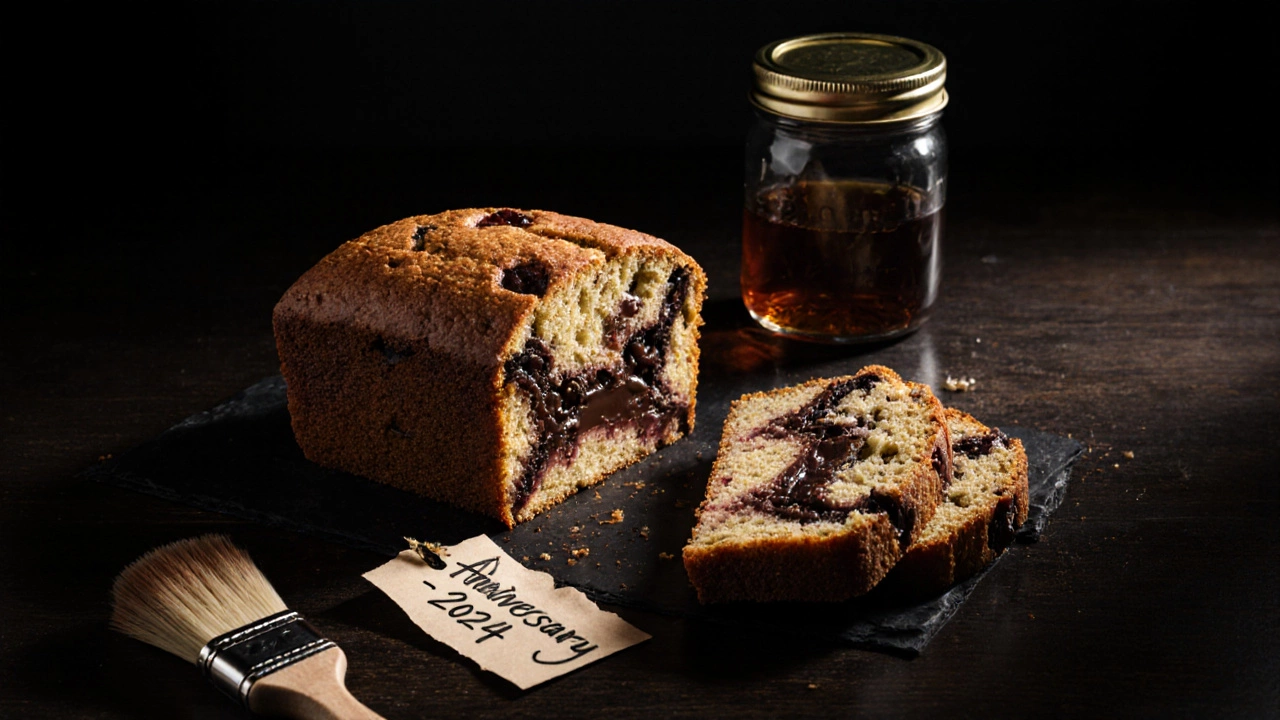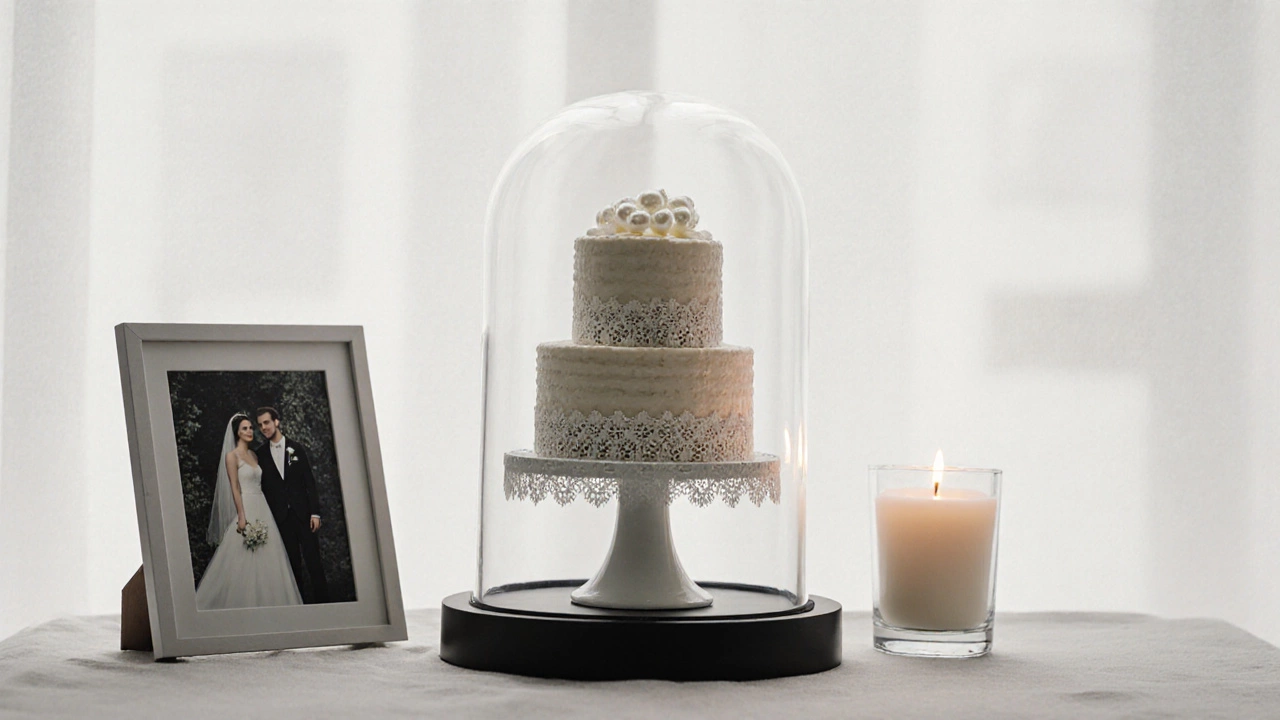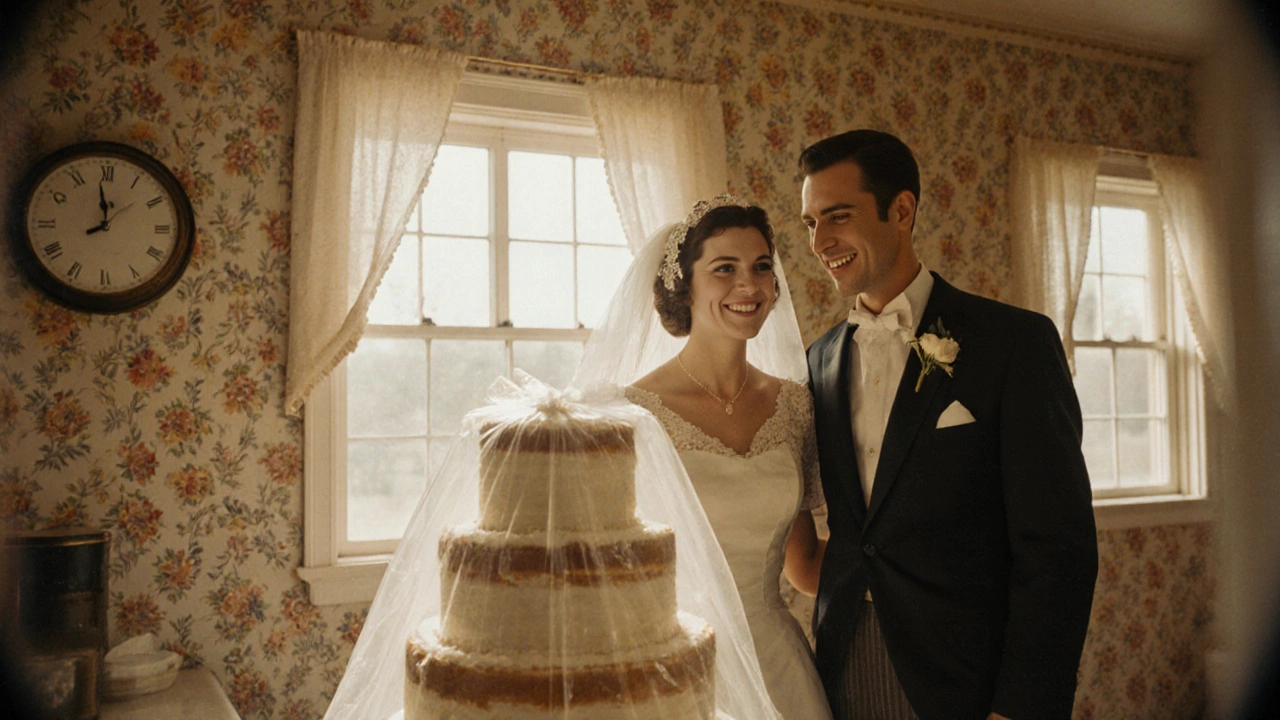People ask if you’re supposed to eat your wedding cake a year later like it’s some sacred ritual-like skipping it would break a spell. The truth? No one’s keeping score. But if you’ve saved that top tier for your first anniversary, you’re not alone. Thousands do it every year. And yes, it can be delicious-if you did it right.
Why Do People Save Their Wedding Cake?
It started as a practical move. Back in the 1800s, wedding cakes were expensive and rare. Families saved a slice to eat on the baby’s christening. Over time, that turned into saving it for the first anniversary. By the 1950s, it became a romantic gesture in the U.S. and U.K.-a symbol of lasting love. Today, it’s more about nostalgia than superstition. You want to taste that moment again. The sugar, the frosting, the quiet joy of your first day as a married couple.
But here’s the catch: most wedding cakes aren’t built to last. Buttercream melts. Fondant cracks. Fruitcake? That’s the only one that survives. If you’re planning to save yours, you need to know how-not just why.
What Kind of Cake Actually Survives a Year?
Not all cakes are created equal when it comes to freezing. A light sponge cake with fresh berries? Don’t even think about it. It’ll turn into a soggy, icy mess. A dense fruitcake soaked in alcohol? That’s the classic. It’s been preserved for centuries with rum, brandy, or sherry. The alcohol acts as a preservative, and the dried fruit holds up.
Modern wedding cakes? Most are made with buttercream, cream cheese frosting, or whipped ganache. These don’t freeze well. Buttercream can separate. Cream cheese turns grainy. Whipped cream? Gone in a week. Even if you wrap it perfectly, the texture changes. You’re not tasting your wedding day-you’re tasting freezer burn.
There’s one exception: dense sponge cakes with jam or ganache filling. If your baker used a pound cake base with dark chocolate ganache and no fresh fruit, it has a shot. Ask your cake maker what they used. If they say “stabilized whipped cream” or “fresh strawberries,” you’re better off buying a new one for your anniversary.
How to Save Your Cake Properly
If you’re determined to keep that top tier, here’s how to do it right:
- Take it off the stand. Remove any non-edible decorations-flowers, pearls, figurines. They can harbor bacteria or leave residue.
- Chill the cake in the fridge for 2 hours. This firms up the frosting so it doesn’t smear when you wrap it.
- Wrap it tightly in plastic wrap. At least two layers. No air should get in.
- Put it in a heavy-duty freezer bag or airtight container. Squeeze out all the air.
- Label it with the date. Use masking tape and a marker. Don’t trust your memory.
- Freeze it at 0°F (-18°C) or colder. Don’t put it on the door. The temperature fluctuates too much.
Most bakers in Sydney and Melbourne who specialize in anniversary cakes use a method called the “double-wrap freeze.” They bake the cake a week early, freeze it whole, then frost it after thawing. That’s the secret to keeping the texture intact. If your cake was frosted before freezing, you’re already at a disadvantage.

What Happens When You Thaw It?
Don’t just pull it out and dig in. That’s how you get condensation-water pooling on the frosting, making it slide off. Here’s the right way:
- Move it from the freezer to the fridge 24 hours before you plan to eat it.
- Let it sit at room temperature for another 2-3 hours. Don’t rush it.
- Check the texture. If the frosting looks cracked or oily, it’s been damaged. The cake might still taste fine, but it won’t look like your wedding day.
- Use a sharp knife. Frozen cake is brittle. A serrated knife helps avoid crumbling.
Some people re-frost the top layer. Others just slice off the outer edges where freezer burn might’ve crept in. If the cake smells off-like plastic or sour milk-throw it out. No amount of nostalgia is worth food poisoning.
Is It Worth It?
Let’s be real. Most people who save their cake for a year end up disappointed. The flavor fades. The texture turns rubbery. The frosting tastes like cardboard. One couple in Perth told me they saved their three-tiered vanilla buttercream cake. When they ate it a year later, they laughed. “It tasted like a forgotten birthday cake from 2012.”
But some people swear by it. A friend of mine saved her grandmother’s fruitcake recipe from 1978. She fed it rum every month for a year. When they ate it on their fifth anniversary, she cried. “It tasted exactly like my childhood.”
So ask yourself: Are you doing this for tradition? Or for the taste? If it’s the taste, buy a new cake. If it’s the memory, take a photo of it. Eat a slice on your wedding day. Save the rest as a keepsake-not a snack.

Alternatives to Eating It
You don’t have to eat it to honor it. Here are better ideas:
- Keep the top tier as a keepsake. Freeze it, then display it in a glass dome on your shelf. No one needs to eat it to remember it.
- Make a mini version. Hire your original baker to recreate the top tier in a smaller size. Fresh, perfect, and safe to eat.
- Turn it into something else. Bake cupcakes with the same flavor profile. Make cake pops. Freeze the batter and bake it later.
- Save the topper. That’s the real heirloom. It’s the part that lasts. The cake? It’s just food.
One couple in Brisbane had their cake turned into a painting. The baker used edible ink to recreate the design on canvas. They hang it above their bed. Every anniversary, they look at it. They don’t eat it. They remember it.
What Your Baker Should Tell You
Good cake makers don’t just make cakes. They advise you. If you’re thinking of saving your cake, ask your baker this:
- “What’s the best cake for freezing?”
- “Can you bake it a week early and frost it after thawing?”
- “Do you offer anniversary cake preservation packages?”
Some bakers in Australia now offer “anniversary cake kits.” They bake the cake, freeze it, and give you instructions. For $80-$150, they’ll even re-frost it for you on your anniversary. No freezer burn. No guesswork.
That’s the modern way. It’s not about saving the original. It’s about preserving the feeling.
Final Thought: It’s Not About the Cake
You didn’t marry a dessert. You married a person. The cake is a symbol, not the source. If you eat it a year later and it’s perfect? That’s a bonus. If it’s weird? That’s okay. Love doesn’t depend on sugar.
Some couples throw the cake away. Others eat it on their wedding night. One couple I know fed it to their dog. (He loved it.)
Do what feels right. Not what you think you’re supposed to do.
Is it safe to eat wedding cake after a year?
It’s only safe if it was frozen properly and the cake was made with stable ingredients like fruitcake or dense sponge with ganache. Buttercream, cream cheese, or fresh fruit cakes can harbor bacteria or spoil even in the freezer. Always check for off smells, mold, or strange textures before eating.
Can you freeze a wedding cake with fondant?
Yes, but it’s risky. Fondant can crack, sweat, or absorb odors from the freezer. The best method is to freeze the cake without fondant, then apply it after thawing. If the fondant is already on, wrap it in two layers of plastic wrap and then in aluminum foil. Thaw slowly in the fridge to avoid condensation.
What’s the best cake flavor to save for a year?
Traditional fruitcake soaked in alcohol is the best. Modern alternatives include dense vanilla or chocolate pound cake with chocolate ganache filling. Avoid cakes with fresh fruit, whipped cream, or buttercream frosting-they don’t freeze well and lose texture.
Do wedding cake makers offer preservation services?
Yes, many do-especially in Australia, the U.S., and the U.K. These services often include freezing the cake, storing it for up to a year, and re-frosting or delivering it on your anniversary. Prices range from $80 to $200 depending on size and customization.
Can you eat wedding cake after 2 years?
Technically, if it was frozen at 0°F (-18°C) and sealed perfectly, it might still be safe. But flavor and texture will be severely degraded. Most experts recommend eating it within 12 months. Beyond that, it’s more about sentiment than taste.
